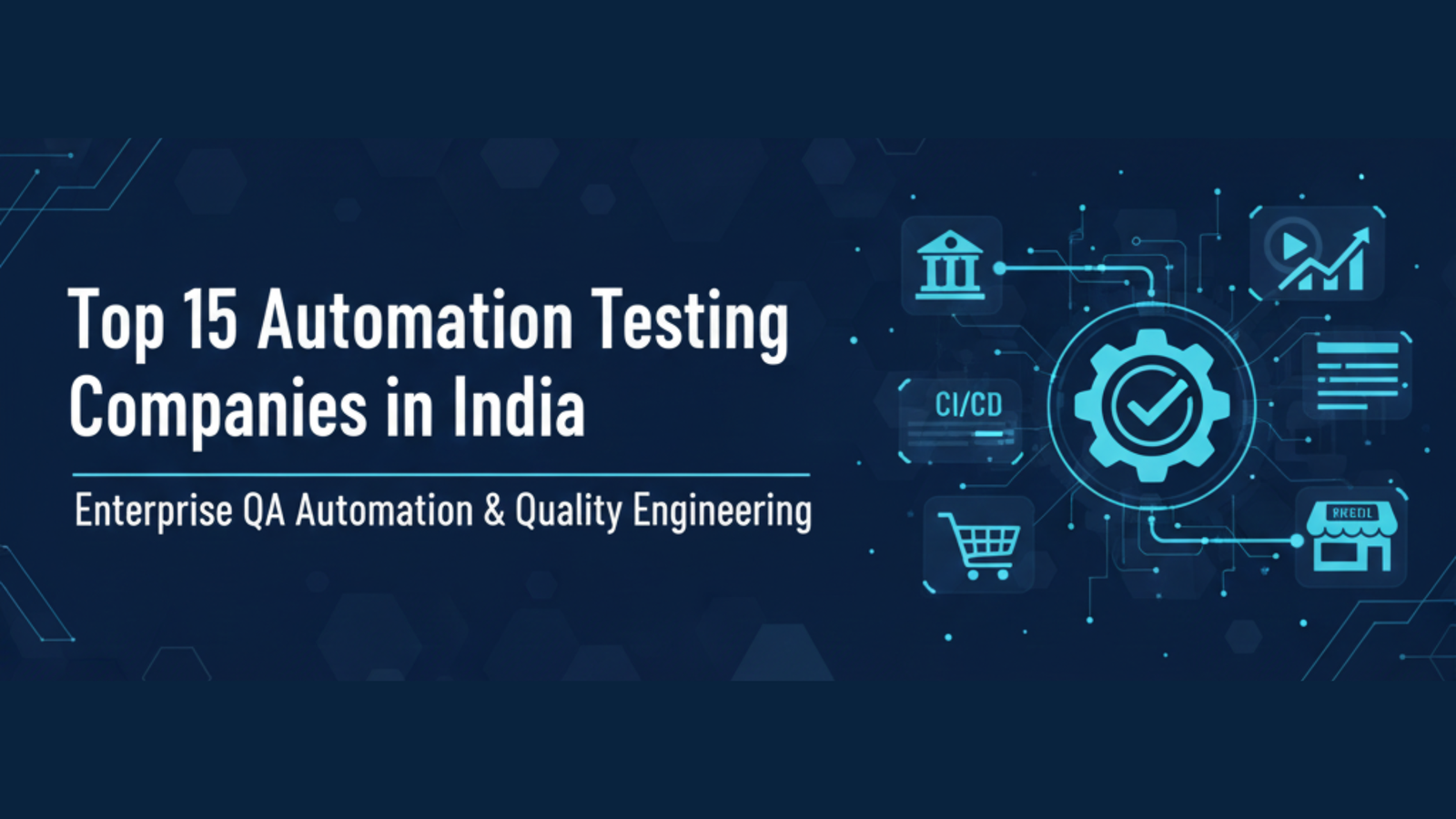With cloud adoption accelerating across industries, organizations are relying on applications that can seamlessly scale, remain reliable, and deliver exceptional user experiences.
However, ensuring such performance in complex, distributed cloud environments requires more than traditional testing approaches. It calls for Cloud Performance Engineering, a systematic, end-to-end approach to proactively design, test, and optimize applications for scalability and resilience.
Did you know? According to TechRadar Pro’s February 2025 analysis, 72% of IT leaders now prioritize cloud optimization as a strategic initiative for cost savings, underscoring that peak performance and efficiency in the cloud have become business-critical imperatives, not optional enhancements.
In this blog, we highlight the top 12 cloud performance engineering tools that businesses can leverage. Naturally, we begin with our own expertise, which goes beyond standard tools to provide a holistic, outcome-driven approach.
1. Avekshaa Technologies’ Cloud Performance Engineering Expertise
Unlike off-the-shelf tools that focus only on specific aspects of testing, we offer a comprehensive cloud performance engineering framework. Our methodology ensures that applications are not only tested for performance bottlenecks but also engineered to deliver predictable scalability, reliability, and availability from the ground up.
Key highlights of our approach include:
- Proactive identification of risks across performance, scalability, availability, and security.
- Integration of performance engineering practices across the entire lifecycle of application development.
- Tailored solutions aligned with business outcomes, such as faster time-to-market and reduced cost of operations.
- Expertise across diverse cloud platforms and hybrid environments.
This holistic approach is trusted by enterprises across banking, financial services, telecom, and other sectors, making us not just a service provider but a performance partner for scalable apps.
2. Apache JMeter
Apache JMeter remains one of the most popular open-source tools for load and performance testing. It supports a wide range of protocols like HTTP, HTTPS, SOAP, and databases, making it highly versatile. Its ability to simulate heavy loads on servers and analyze performance metrics allows organizations to test scalability under realistic conditions.
3. LoadRunner (Micro Focus)
LoadRunner by Micro Focus is a powerful enterprise-grade tool widely used for performance and load testing. It provides extensive protocol support and integrates well with CI/CD pipelines. Businesses use LoadRunner to simulate thousands of concurrent users, measure system behavior, and optimize performance before going live.
4. Gatling
Gatling is another open-source load testing tool designed for ease of use and developer productivity. Known for its detailed and real-time reporting, Gatling integrates smoothly with DevOps workflows. Its efficient resource usage makes it a good choice for testing cloud-based APIs and microservices at scale.
5. BlazeMeter
BlazeMeter is a cloud-based load testing platform that extends the capabilities of JMeter. It enables teams to run large-scale tests in distributed environments without managing infrastructure. With features like real-time analytics and integration with CI/CD tools, BlazeMeter is a go-to for agile and DevOps teams.
6. NeoLoad
NeoLoad by Tricentis is designed to test modern cloud applications, including microservices and APIs. It offers excellent automation capabilities, making it easy to integrate into CI/CD processes. NeoLoad provides realistic test simulations and ensures quick feedback, which is crucial for businesses running frequent releases.
7. Dynatrace
Dynatrace is more than just a performance testing tool, it’s a full-fledged application performance monitoring (APM) platform. Its AI-driven insights help detect bottlenecks, diagnose root causes, and optimize performance in real-time. Dynatrace is particularly effective for monitoring applications in multi-cloud and hybrid cloud environments.
8. AppDynamics
AppDynamics, part of Cisco, is another leading APM tool that provides deep visibility into application performance. It helps organizations monitor business transactions, identify issues, and ensure scalability across complex cloud infrastructures. AppDynamics is widely used in industries where real-time performance insights directly impact customer experience.
9. New Relic
New Relic offers comprehensive observability into application performance, infrastructure, and user experiences. Its cloud-based platform is highly scalable, enabling businesses to track performance metrics across distributed systems. New Relic’s dashboards make it easy to align technical performance with business KPIs.
10. Google Cloud Operations Suite (formerly Stackdriver)
For organizations operating on Google Cloud, the Cloud Operations Suite provides integrated monitoring, logging, and performance management. It allows teams to maintain high availability and scalability by proactively identifying and addressing issues within Google Cloud environments.
11. AWS CloudWatch
Amazon CloudWatch is a monitoring and observability service designed for AWS environments. It collects performance data, logs, and metrics from AWS resources and applications, providing real-time visibility. CloudWatch plays a key role in ensuring applications scale reliably on AWS infrastructure.
12. Azure Monitor
Azure Monitor provides comprehensive insights into applications hosted on Microsoft Azure. It collects telemetry data, offers analytics, and ensures proactive monitoring for performance and scalability. With its seamless integration into Azure services, it is a must-have for organizations leveraging Microsoft’s cloud ecosystem.
Why Tools Alone Are Not Enough
While the above tools are powerful and necessary, it is important to note that tools alone cannot guarantee scalable performance. They are enablers, but true success comes from applying them within the right engineering framework. This is where Avekshaa’s Cloud Performance Engineering expertise makes the difference.
Our outcome-driven approach ensures that:
- Applications are designed for scalability from the ground up.
- Performance issues are identified before they impact end-users.
- Tools are selected, configured, and applied in a way that aligns with specific business needs.
This blend of tools and engineering expertise ensures that clients achieve resilient, scalable, and cost-optimized applications.
Conclusion
As organizations continue to innovate and scale in the cloud, ensuring performance and scalability has become critical. Tools like JMeter, LoadRunner, BlazeMeter, and AppDynamics are invaluable, but they need to be part of a larger strategy.
At Avekshaa Technologies, we go beyond tool-based testing to offer end-to-end Cloud Performance Engineering. By combining industry-leading tools with our proprietary methodologies, we help enterprises achieve predictable outcomes, improved customer experiences, and optimized costs.
If your organization is looking to ensure scalable, high-performing cloud applications, Avekshaa can be your trusted partner in that journey.
Frequently Asked Questions
1. What is cloud performance engineering?
Cloud performance engineering is the process of designing, testing, and optimizing applications to ensure they can handle real-world user demands when deployed in cloud environments. It focuses on scalability, reliability, and efficiency.
2. Why are performance engineering tools important for scalable apps?
These tools help identify bottlenecks, simulate load conditions, monitor response times, and provide insights to optimize infrastructure. Without them, applications may struggle under heavy traffic, leading to downtime or poor user experiences.
3. How do cloud performance tools differ from traditional performance testing tools?
Traditional tools often test applications in static environments. Cloud performance tools, on the other hand, are built for dynamic, distributed environments where scaling up or down is essential. They provide deeper insights into cloud-specific challenges like auto-scaling, latency, and resource allocation.
4. Can performance engineering tools predict future scalability needs?
Yes. Many tools use real-time monitoring and analytics to model future demand. By running stress and capacity tests, teams can forecast how an application will behave under higher loads and plan infrastructure scaling in advance.
5. What features should I look for in a cloud performance tool?
Key features include load testing, real-time monitoring, analytics dashboards, integration with CI/CD pipelines, support for multiple cloud providers, and the ability to simulate real-world traffic scenarios.
6. Do performance tools work across multi-cloud or hybrid cloud setups?
Most modern tools are designed to work in diverse environments, including hybrid and multi-cloud setups. This ensures teams can monitor and optimize apps across different infrastructures without gaps.
7. How often should performance tests be run for cloud applications?
Performance testing should be continuous, not one-time. Running tests after major updates, before new feature releases, and during peak traffic planning cycles helps maintain application stability.
8. Can these tools help reduce cloud costs?
Yes. By identifying inefficiencies such as over-provisioned resources or underutilized infrastructure, performance engineering tools help optimize resource allocation, ultimately lowering operational costs.
9. Are open-source tools sufficient for large-scale cloud apps?
Open-source tools can be powerful and cost-effective, but they may require more customization and in-house expertise. For mission-critical or large-scale apps, a mix of open-source and enterprise-grade tools often works best. 10. How do performance engineering tools integrate into DevOps workflows?
They can be integrated into CI/CD pipelines to ensure performance testing happens automatically with every new release. This aligns with DevOps practices, ensuring continuous delivery of scalable, reliable apps.


